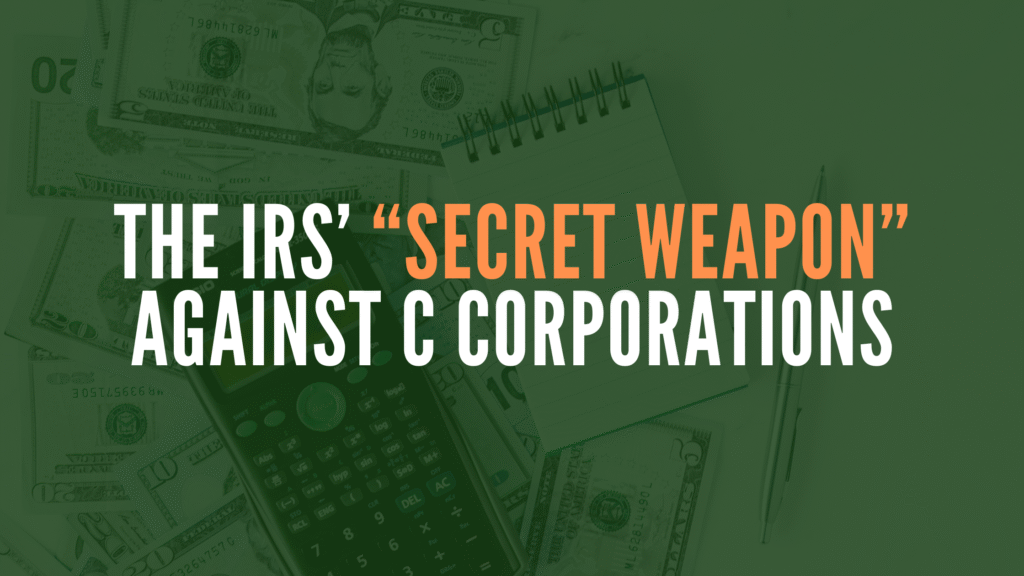If you run your business as a C corporation, there’s a little-known tax trap you need to have on your radar: the Accumulated Earnings Tax, or AET.
Here’s how it works and why it can be a nasty surprise if you’re not prepared.
Why the AET Exists
The IRS doesn’t love it when C corporations keep piling up profits instead of paying them out as dividends. Why? Because when you do pay dividends, the IRS gets to tax that money a second time at the shareholder level.
If your corporation holds onto too much cash, investments, or loans to shareholders, the IRS might decide you’re avoiding that second round of tax and hit you with the AET as a penalty.
What Makes It Hurt
Here’s the painful part:
- Your C corp already pays 21% corporate tax on its profits.
- If you take those profits as dividends, you (the shareholder) pay up to 23.8% more in taxes.
- If the IRS thinks you’re avoiding paying dividends, they can slap on the AET a flat 20% penalty tax.
That’s a lot of tax layers on the same money.
Who’s Most at Risk
While the AET can apply to any C corporation (even big public companies), it’s closely held corporations the ones owned by a small group of shareholders that are most likely to get audited for it. That’s because, unlike public companies, you have more control over dividend decisions.
Historically, the IRS hasn’t gone after the AET very often, but lately, I’ve been hearing rumblings that this could change.
How to Stay Out of Trouble
The good news? There are smart ways to avoid the AET:
- Switch to an S corporation no AET risk at all.
- Stay under the earnings threshold — $250,000 for most C corps, $150,000 for many service businesses.
- Prove you need the extra cash — If you’re holding more than the threshold, document exactly why. Maybe you’re saving for a major expansion, paying off big debts, keeping extra working capital, or preparing to redeem stock.
The key word here is documentation. Keep clear records board meeting notes, business plans, budgets, projections that show exactly why you’re holding onto those earnings. If the IRS comes knocking, you’ll be ready.
The AET isn’t something to lose sleep over if you plan ahead. But if you ignore it, it can quietly drain a lot of your hard-earned profits.
If you’re running a C corporation and aren’t sure whether you’re at risk, let’s review your retained earnings and see if we need to take action now before the IRS decides for us because with the AET, the best defense is having your story and your paperwork ready before anyone asks.

